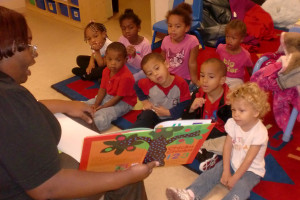 I have been a voracious reader since I was a young child. Words have always been an important part of my life, so I never thought much about the pictures words were painting in my head. Sure, I knew seeing a movie of a book I had read always required a shift of view, even if I loved the movie version, because it didn’t look the way I had imagined. But that seemed so obvious it was not worth considering—until today.
I have been a voracious reader since I was a young child. Words have always been an important part of my life, so I never thought much about the pictures words were painting in my head. Sure, I knew seeing a movie of a book I had read always required a shift of view, even if I loved the movie version, because it didn’t look the way I had imagined. But that seemed so obvious it was not worth considering—until today.
As an ASCD member, I get their monthly Education Update. The lead in the July edition is called “When the Screen Goes Blank: Helping Students See What They Read.” Research done by Jeffrey Wilhelm of Boise State University shows that poor readers see only the words in their heads. They don’t form pictures which limits their understanding of text. As librarians we know that reading is so much more than decoding. It’s about making meaning (comprehension) and often reading is a means of making connection with the subject matter. You can’t connect and certainly you can’t get new ideas if all you are seeing are words.
What is interesting about this study is one big cause of students’ inability to visualize what they are reading is they had little or no contact with picture books. Sad and obviously damaging. And it is one more reason why students desperately need to have elementary librarians in their schools. I have noticed non-librarians tend to read picture books to kids differently. Many of them read a page, then flash the picture. They may ask a question or two about it, but there is a small disconnect. When I was an elementary (and a children’s) librarian, I held the book with the spine in my palm, angling it so I could read the text while keeping the pictures in constant view. I practiced and became smooth at passing the book to my other hand without a break in the story to be able to read the facing page. At all times students were focused on the pictures, not on me.
 As a high school librarian, I can remember having fun with a purpose by reading picture books to my much more sophisticated students to set the tone for a unit. Patricia Polacco’s Pink and Sayserved as a prelude to a study of Stephen Crane’s Red Badge of Courage. They needed both emotional and visual connections to that time period to aid in their comprehension of the story.
As a high school librarian, I can remember having fun with a purpose by reading picture books to my much more sophisticated students to set the tone for a unit. Patricia Polacco’s Pink and Sayserved as a prelude to a study of Stephen Crane’s Red Badge of Courage. They needed both emotional and visual connections to that time period to aid in their comprehension of the story.
Kathy Barclay of the Rowland Reading Foundation says students need to read with all five senses, identifying what they smell and feel in addition to what they see. In writing my YA fantasy, Woven through Time, I found pictures to help me focus better on what I was envisioning in my brain. I realize I was also smelling salt water when they neared the sea and the woodsy scent when my characters were in the forest. To fully “get” the story, students must become a part of it.
What techniques can you suggest to students (and teachers) to help poor readers at all levels learn to visualize what is happening on the printed page?
